During the last few months, I had the opportunity to work with an amazing team of people who were all very different and diverse in terms of skill sets and knowledge. At first, I was a little concerned about the random teams, but I’m glad Tamar encouraged us to do this because I feel our team was able to analyze Zara’s issues with different perspectives, which allowed us to see all facets of the problem.
In terms of the project itself, I found it extremely relevant to the course to be able to apply the concepts such as the 4 marketing P’s (product, price, place, promotion) to a real-life company. With a company as successful as Zara, it was much more challenging to think of creative ways to improve on the already effective marketing mix. However, by analyzing Zara, I feel I have not only come away with a very solid foundation for marketing, but also an understanding on how to use this in my future career. So far through university, I have found that my professors do a great job of teaching the material, but oftentimes I can’t see how it is applicable to my job. Tamar has done a great job of going beyond the material and her passion for marketing really shines through. I would definitely recommend this course to incoming students!
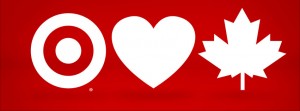
In Natalie’s Post about Target, she commends target for their marketing strategies to raise awareness and hype about their expansion outside of USA and into Canada. She states that although the company very successfully increased the excitement of Canadians, customers were disappointed by the lack of products on the shelf.
Upon further research, it seems like customers are also complaining about the higher prices in Canadian stores compared to American stores. Especially with the high Canadian currency, it makes no sense for the odd price discrepancies. This may cause potential problems for Target locations closer to the US border, as Canadians may instead opt to cross the border and buy the same products for a significantly lower price.
Clearly Target started off with a great place and promotion strategy having acquired Zeller’s high-profile locations and initiated a great marketing campaign. However, it seems the company lacked the preparation in terms of distribution and price, causing frustration for its customers, which may have tarnished the brand for Canadian. This example shows how integral all aspects of the marketing mix is to a marketing plan and how every factor must be considered.
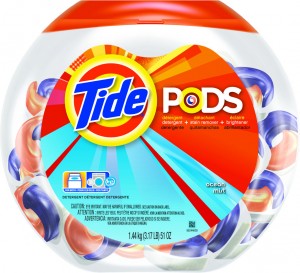
In Brandchannel’s post, the blog suggests that Tide is killing the laundry detergent industry with the introduction of its innovative product, Tide Pods. The blog states that when the product hit the market, competitors saw a 2% decrease in laundry detergent sales in just 12 months. I agree with the possibility of Tide Pods eventually driving laundry detergents into distinction due to the products many benefits, making for a more convenient and hassle free laundry wash.
The Tide Pod brings far more benefits to consumers than conventional detergents. In each Tide Pod, the pre-measured amounts of detergent prevent customers from overusing or even spilling the product by accident. This allows customers to extend their product purchase cycle. Furthermore, the pods are timesavers as customers are able to simply pop one into the washing machine without going through the hassle of measuring how much detergent to use. Lastly, Tide Pods can be brought anywhere with its portable size, eliminating the hassle of lugging around a huge bottle of detergent. It’s no wonder customers are switching quickly to Tide Pods.
With this innovation, there is no doubt that Tide will suffer cannibalization as the sale for its laundry detergent products will be hugely affected. However, it seems that by being the first to innovate a pouch detergent, Tide has been successful in gaining market share in this category and has further strengthened its brand by being positioned as an innovator that understands its customer needs.
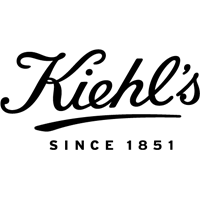
Selecting a skincare line is no easy task, especially when a plethora of brands all boast the same promise to deliver beautiful skin by offering the most cutting edge formulas. In this highly saturated market, skincare products have no doubt reached the mature segment of the product life cycle so how does one differentiate itself from all its competitors? During my quest, I found Kiehl’s did all the right things to convince me it was the brand for me and ultimately captured my loyalty.
First of all, Kiehl’s offers a truly unique and compelling story, which is retold through generations and integrated into all aspects of the brand. The business began back in 1851 as a family run apothecary for four generations before being sold to l’Oreal which allowed the company to expand its distribution and grow to greater heights. Their products reflect their roots by always choosing the best natural ingredients to create their herbal and pharmaceutical formulas, ensuring it is safe and easy on the skin. Even the product packaging has a homemade simple look making it seem like they are individually packaged and made in the back of the store.

In terms of the retail experience, Kiehls recreates the original store by having an original Ducati motorcycle and Mr Bones in every new store while having friendly and non-pushy consultants in lab coats who genuinely help you answer questions about your specific skin type.
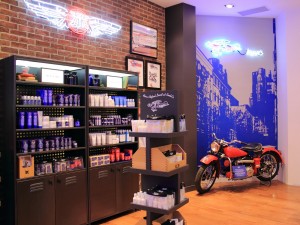
Most striking to me was Kiehl’s unconventional marketing strategy which to my pleasure, consisted of word of mouth promotion and generously giving out samples of their product! This really allowed me to see if their product was suitable for my skin and most importantly showed me the trust Kiehl’s had in themselves by allowing their products to speak for itself. In the end, I believe its the experience and story a company creates around its brand that will truly differentiate and set itself apart from its competitors.
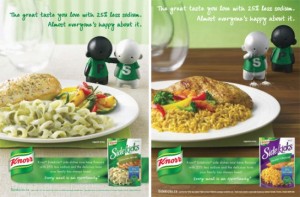
Whether you are waiting for the sky train, scrolling down your Facebook feed or even chilling in Sauder’s bathroom stall, ads are everywhere and there is no escape. If your like me, you try to avoid ads at all costs and the moment they make an appearance, you instinctively scroll past them or switch the channel. With companies pouring millions of dollars into their advertising campaigns, there must be a more effective way to engage consumers in order to convey their brand message.
Being one of the companies that have captured my attention in the past, Knorr has done a great job with their campaign for Knorr Sidekicks with 25% reduction in sodium. While not the most exciting message to convey to consumers, Knorr got creative and chose to tap into the affective emotions of consumers through the introduction of Salty, an animated saltshaker who has lost all purpose in his life and decides to leave home. Along with the crestfallen music, it is easy to see how consumers become emotionally attached to this character in Knorr’s video campaigns:

Shortly after the campaign launch, Salty jumped directly out of ads and into the personal life of consumers through social media. He created his own profile and interacted directly with customers through quests and shared videos about his life which went viral. As a result, sales for Knorr Sidekicks increased by 12 % and the brand moved into the number one spot as the meal accompaniment leader.
This campaign highlights the importance of inspiring dialogue through word of mouth and participation. With the continual shift in cultural context, people are increasingly influenced by word of mouth and personal recommendations. Thus, rather than focusing directly on connecting a company brand with consumers, perhaps what is most important in a marketing campaign is connecting people with people.

Widely known to the public, the practice of photo manipulation using programs such as Photoshop is commonplace in professional marketing advertisements, especially for the promotion of beauty and clothing products with models and celebrities. With the leak of several before and after photo-editing advertisement work of idolized celebrities over the years, it becomes clear that the image of perfection these companies aim to achieve are humanly impossible. This potentially creates harm to developing young girls who aim for a distorted unrealistic image of perfection and beauty. Many companies idly sit by and conform to the industry norm, but one company stands against falsified beauty and instead strives to promote natural beauty, whether it is different body sizes, skin tone and hair color. Dove took a risk and launched their Campaign for Real Beauty featuring everyday woman instead of skinny models with a aim to educate the public by uncovering the truth in the perceptions of beauty advertisements. Below is one of many videos released by Dove’s campaign:

As a consumer, stumbling across Dove advertisements while watching TV was shocking at first, but I was intrigued by how different it was compared to other company advertisements. With each time I came across another Dove commercial, my appreciation for the company grew because I felt that they really understood everyday people and were in fact looking out for the well-being of their consumers. Instead of focusing on idealistic images of beauty, Dove chose a different promotion route by accepting people the way they are and promoting self-esteem. As a result, consumers feel a strong sense of trust and loyalty to the company. Based on my experience, I believe companies should follow Dove and take an ethical stance with regards to marketing instead of misleading the young children of our generation. With corporate social responsibility becoming increasingly important for a company’s brand image, ethical marketing must be taken into consideration and will truly differentiate them from their competitors.








